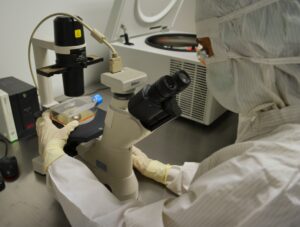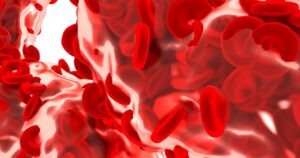 Soft tissue sarcomas (STSs) are rare mesechymal malignancies characterized by distintive molecular, histological and clinical features. Many STSs are considered as predominatly epigenetic diseases due to underlying chromatin deregulation. Discovery of deregulated functional antagonism between the chromatin remodeling BRG1/BRM-associated (BAFs) and the histone modifying Polycomb repressor complexes (PRCs) has provided novel actionable targets. In epithelioid sarcoma (ES), extracranial, extrarenal malignant rhabdoid tumors (eMRTs) and synovial sarcoma (SS), the total or partial loss of the BAF core subunit SMARCB1, driven by different alterations, is associated with PRC2 deregulation and dependency on its enzymatic subunit, EZH2. In these SMARCB1-deficient STSs, aberrant EZH2 expression and/or activity emerged as a druggable vulnerability. Although preclinical investigation supported EZH2 targeting as a promising therapeutic option, clinical studies demonstrated a variable response to EZH2 inhibitors. Actually, whereas the clinical benefit recorded in ES patients prompted the FDA approval of the EZH2 inhibitor tazemetostat, the modest and sporadic responses observed in eMRT and SS patients highlighted the need to deepen mechanistic as well as pharmacological investigations to improve drug effectiveness. In this article the current knowledge of different mechanisms driving SMARCB1 deficiency and EZH2 deregulation in ES, eMRT and SS along with preclinical and clinical studies of EZH2-targeting agents is summarized. Read the full article here.
Soft tissue sarcomas (STSs) are rare mesechymal malignancies characterized by distintive molecular, histological and clinical features. Many STSs are considered as predominatly epigenetic diseases due to underlying chromatin deregulation. Discovery of deregulated functional antagonism between the chromatin remodeling BRG1/BRM-associated (BAFs) and the histone modifying Polycomb repressor complexes (PRCs) has provided novel actionable targets. In epithelioid sarcoma (ES), extracranial, extrarenal malignant rhabdoid tumors (eMRTs) and synovial sarcoma (SS), the total or partial loss of the BAF core subunit SMARCB1, driven by different alterations, is associated with PRC2 deregulation and dependency on its enzymatic subunit, EZH2. In these SMARCB1-deficient STSs, aberrant EZH2 expression and/or activity emerged as a druggable vulnerability. Although preclinical investigation supported EZH2 targeting as a promising therapeutic option, clinical studies demonstrated a variable response to EZH2 inhibitors. Actually, whereas the clinical benefit recorded in ES patients prompted the FDA approval of the EZH2 inhibitor tazemetostat, the modest and sporadic responses observed in eMRT and SS patients highlighted the need to deepen mechanistic as well as pharmacological investigations to improve drug effectiveness. In this article the current knowledge of different mechanisms driving SMARCB1 deficiency and EZH2 deregulation in ES, eMRT and SS along with preclinical and clinical studies of EZH2-targeting agents is summarized. Read the full article here.
Publications
Pathophysiology, Diagnosis, and Management of Takayasu Arteritis: A Review of Current Advances
 Takayasu arteritis (TA) is a rare, chronic, inflammatory vasculitis that primarily affects large arteries. This review provides an overview of the pathophysiology, diagnosis, and management of TA based on current advances in the field. TA is characterized by autoimmune-mediated inflammation, vascular remodeling, and endothelial dysfunction. The disease progresses through three stages (active, chronic, and healing phase) each presenting distinct clinical features. Diagnosis of TA can be challenging due to non-specific clinical manifestations and the lack of specific diagnostic tests. Various imaging modalities, such as angiography, ultrasound, and Doppler techniques, play a crucial role in the diagnosis of TA by visualizing arterial involvement and assessing disease extent. Management of TA involves a multidisciplinary approach, with disease-modifying anti-rheumatic drugs (DMARDs) as the cornerstone of medical therapy. Non-pharmacologic interventions, such as resistance exercises and curcumin supplementation, show potential benefits. Invasive interventions, including endovascular therapy and open surgery, are used for managing vascular lesions. However, challenges remain in disease understanding and management, including the heterogeneity of disease presentation and the lack of standardized treatment guidelines. The future of TA management lies in precision medicine, utilizing biomarkers and molecular profiling to personalize treatment approaches and improve patient outcomes. Further research is needed to unravel the underlying mechanisms of TA and develop targeted therapies. Read the full article here.
Takayasu arteritis (TA) is a rare, chronic, inflammatory vasculitis that primarily affects large arteries. This review provides an overview of the pathophysiology, diagnosis, and management of TA based on current advances in the field. TA is characterized by autoimmune-mediated inflammation, vascular remodeling, and endothelial dysfunction. The disease progresses through three stages (active, chronic, and healing phase) each presenting distinct clinical features. Diagnosis of TA can be challenging due to non-specific clinical manifestations and the lack of specific diagnostic tests. Various imaging modalities, such as angiography, ultrasound, and Doppler techniques, play a crucial role in the diagnosis of TA by visualizing arterial involvement and assessing disease extent. Management of TA involves a multidisciplinary approach, with disease-modifying anti-rheumatic drugs (DMARDs) as the cornerstone of medical therapy. Non-pharmacologic interventions, such as resistance exercises and curcumin supplementation, show potential benefits. Invasive interventions, including endovascular therapy and open surgery, are used for managing vascular lesions. However, challenges remain in disease understanding and management, including the heterogeneity of disease presentation and the lack of standardized treatment guidelines. The future of TA management lies in precision medicine, utilizing biomarkers and molecular profiling to personalize treatment approaches and improve patient outcomes. Further research is needed to unravel the underlying mechanisms of TA and develop targeted therapies. Read the full article here.
Development of a person-centred digital platform for the long-term support of people living with an adult-onset genetic disease predisposition
 Individuals at an inherited high-risk of developing adult-onset disease, such as breast cancer, are rare in the population. These individuals require lifelong clinical, psychological and reproductive assistance. After a positive germline test result, clinical genetic services provide support and care coordination. However, ongoing systematic clinical follow-up programmes are uncommon. Digital health solutions offer efficient and sustainable ways to deliver affordable and equitable care. This paper outlines the codesign and development of a digital health platform to facilitate long-term clinical and psychological care, and foster self-efficacy in individuals with a genetic disease predisposition.
Individuals at an inherited high-risk of developing adult-onset disease, such as breast cancer, are rare in the population. These individuals require lifelong clinical, psychological and reproductive assistance. After a positive germline test result, clinical genetic services provide support and care coordination. However, ongoing systematic clinical follow-up programmes are uncommon. Digital health solutions offer efficient and sustainable ways to deliver affordable and equitable care. This paper outlines the codesign and development of a digital health platform to facilitate long-term clinical and psychological care, and foster self-efficacy in individuals with a genetic disease predisposition.
In this study a mixed-methods approach for data gathering and analysis. Data collection is in two phases is adopted. In phase 1, 300 individuals with a high-risk genetic predisposition to adult disease will undertake an online survey to assess their use of digital health applications (apps). In phase 2, focus groups with 40 individuals with a genetic predisposition to cardiac or cancer syndromes, and 30 clinicians from diverse specialities involved in their care will be coducted. These focus groups will inform the platform’s content, functionality and user interface design, as well as identify the barriers and enablers to the adoption and retention of the platform by all endusers. Phase 3 will identify the core skillsets for a novel digital health coordinator role. Outcomes from phases 1 and 2 will inform development of the digital platform, which will be user-tested and optimised in phase 4. Read the full article here.
 Evans syndrome (ES) is a rare disease characterized by the simultaneous or sequential development of autoimmune hemolytic anemia (AIHA) with immune thrombocytopenia (ITP), and less frequently autoimmune neutropenia. ES can be primary or secondary to another disease. Isolated immune cytopenias have been reported with Sjogren’s syndrome (SS) in the past, but the association with ES has very rarely been reported.
Evans syndrome (ES) is a rare disease characterized by the simultaneous or sequential development of autoimmune hemolytic anemia (AIHA) with immune thrombocytopenia (ITP), and less frequently autoimmune neutropenia. ES can be primary or secondary to another disease. Isolated immune cytopenias have been reported with Sjogren’s syndrome (SS) in the past, but the association with ES has very rarely been reported.
In this report a patient with a known history of SS who presents with mild bleeding symptoms, such as heavier menses and new ecchymoses is presented. She is found to have a very low haptoglobin, spherocytes on peripheral smear, positive direct antiglobulin test, and positive eluate testing. The findings are consistent with severe ITP and AIHA, leading to a diagnosis of secondary ES. She is treated with high-dose steroids for 4 days concurrent with 2 days of intravenous immunoglobulin (IVIG) with marked improvement in her hematological function.
Although ES is a rare presentation of autoimmune disease, it is associated with high mortality and necessitates prompt clinical identification and appropriate therapy selection. Further research is necessary to understand the associated clinical characteristics, determine prognosis, and provide management recommendations. Read the full article here.
 Gaucher disease (GD) is a rare autosomal recessive lysosomal storage disorder. GD types 2 and 3 are known as neuronopathic Gaucher disease (nGD) because they have brain involvement that progresses over time. Implementing a systematic approach to the collection of real-world clinical and patient-relevant outcomes data in nGD presents an opportunity to fill critical knowledge gaps and ultimately help healthcare providers in the management of this patient population. This paper summarizes the development of a patient-initiated Gaucher Registry for Development Innovation and Analysis of Neuronopathic Disease (GARDIAN).
Gaucher disease (GD) is a rare autosomal recessive lysosomal storage disorder. GD types 2 and 3 are known as neuronopathic Gaucher disease (nGD) because they have brain involvement that progresses over time. Implementing a systematic approach to the collection of real-world clinical and patient-relevant outcomes data in nGD presents an opportunity to fill critical knowledge gaps and ultimately help healthcare providers in the management of this patient population. This paper summarizes the development of a patient-initiated Gaucher Registry for Development Innovation and Analysis of Neuronopathic Disease (GARDIAN).
The International Gaucher Alliance leads the GARDIAN planning, including governance, scope, stakeholder involvement, platform, and reporting. Registry element input is determined in a series of meetings with clinical experts, patients, and caregivers.
The comprehensive set of clinical and patient relevant outcomes data, developed collaboratively among all stakeholders, to be reported using GARDIAN will bridge the many gaps in the understanding of nGD and align with regulatory frameworks on real-world data needs. Read the full article here.
 Dystonia is characterised as uncontrolled, often painful involuntary muscle contractions that cause abnormal postures and repetitive or twisting movements. These movements can be continuous or sporadic and affect different parts of the body and range in severity. Dystonia and its related conditions present a huge cause of neurological morbidity worldwide. Although therapies are available, achieving optimal symptom control without major unwanted effects remains a challenge. Most pharmacological treatments for dystonia aim to modulate the effects of one or more neurotransmitters in the central nervous system, but doing so effectively and with precision is far from straightforward. In this article the physiology of key neurotransmitters, including dopamine, noradrenaline, serotonin (5-hydroxytryptamine), acetylcholine, GABA, glutamate, adenosine and cannabinoids, and their role in dystonia is discussed. Read the full article here.
Dystonia is characterised as uncontrolled, often painful involuntary muscle contractions that cause abnormal postures and repetitive or twisting movements. These movements can be continuous or sporadic and affect different parts of the body and range in severity. Dystonia and its related conditions present a huge cause of neurological morbidity worldwide. Although therapies are available, achieving optimal symptom control without major unwanted effects remains a challenge. Most pharmacological treatments for dystonia aim to modulate the effects of one or more neurotransmitters in the central nervous system, but doing so effectively and with precision is far from straightforward. In this article the physiology of key neurotransmitters, including dopamine, noradrenaline, serotonin (5-hydroxytryptamine), acetylcholine, GABA, glutamate, adenosine and cannabinoids, and their role in dystonia is discussed. Read the full article here.
 Castleman disease (CD) is a group of rare and complex lymphoproliferative disorders that can manifest in two general forms: unicentric CD (UCD) and multicentric CD (MCD). These two forms differ in clinical manifestation, imaging appearances, treatment options, and prognosis. UCD typically manifests as a solitary enlarging mass that is discovered incidentally or after development of compression-type symptoms. MCD usually manifests acutely with systemic symptoms including fever and weight loss. As a whole, CD involves lymph nodes throughout the chest, neck, abdomen, pelvis, and axilla and can have a wide variety of imaging appearances. Since a diagnosis of CD based solely on imaging findings is often not possible, pathologic confirmation with core needle biopsy and/or surgical excision is necessary. Nevertheless, imaging plays a crucial role in supporting the diagnosis of CD, guiding appropriate regions for biopsy, and excluding other potential causes or mimics of disease. CT is frequently the initial imaging technique used in evaluating potential CD. MRI and PET play important roles in thoroughly evaluating the disease and determining its extent, especially the MCD form. Complete surgical excision is typically curative for UCD. MCD usually requires systemic therapy. Read the full article here.
Castleman disease (CD) is a group of rare and complex lymphoproliferative disorders that can manifest in two general forms: unicentric CD (UCD) and multicentric CD (MCD). These two forms differ in clinical manifestation, imaging appearances, treatment options, and prognosis. UCD typically manifests as a solitary enlarging mass that is discovered incidentally or after development of compression-type symptoms. MCD usually manifests acutely with systemic symptoms including fever and weight loss. As a whole, CD involves lymph nodes throughout the chest, neck, abdomen, pelvis, and axilla and can have a wide variety of imaging appearances. Since a diagnosis of CD based solely on imaging findings is often not possible, pathologic confirmation with core needle biopsy and/or surgical excision is necessary. Nevertheless, imaging plays a crucial role in supporting the diagnosis of CD, guiding appropriate regions for biopsy, and excluding other potential causes or mimics of disease. CT is frequently the initial imaging technique used in evaluating potential CD. MRI and PET play important roles in thoroughly evaluating the disease and determining its extent, especially the MCD form. Complete surgical excision is typically curative for UCD. MCD usually requires systemic therapy. Read the full article here.
 Sarcoidosis is a multisystem inflammatory disease involving granuloma formation. The exact etiology of the disease remains unknown. While the lungs are the most commonly involved organs in sarcoidosis, bone marrow-only involvement is quite rare. As bone marrow-only involvement can have a presentation that closely resembles multiple myeloma, a significant diagnostic dilemma can occur as the treatment for sarcoidosis is different compared to multiple myeloma. In this report a case of a 62-year-old female who presented with worsening lower extremity weakness and fatigue is presented. She is found to have new-onset hypercalcemia, normocytic anemia, and lytic bony lesions. Extensive laboratory workup for multiple myeloma is negative with bone marrow biopsy showing non-caseating granulomas, thus diagnosing the patient with sarcoidosis involving the bone marrow. Read the full article here.
Sarcoidosis is a multisystem inflammatory disease involving granuloma formation. The exact etiology of the disease remains unknown. While the lungs are the most commonly involved organs in sarcoidosis, bone marrow-only involvement is quite rare. As bone marrow-only involvement can have a presentation that closely resembles multiple myeloma, a significant diagnostic dilemma can occur as the treatment for sarcoidosis is different compared to multiple myeloma. In this report a case of a 62-year-old female who presented with worsening lower extremity weakness and fatigue is presented. She is found to have new-onset hypercalcemia, normocytic anemia, and lytic bony lesions. Extensive laboratory workup for multiple myeloma is negative with bone marrow biopsy showing non-caseating granulomas, thus diagnosing the patient with sarcoidosis involving the bone marrow. Read the full article here.
 Wolff-Parkinson-White syndrome is rarely associated with a right atrial aneurysm. However, when such a condition occurs, it is hard to manage since pre-excitation is induced as long as the aneurysm persists. In this case is 14-year-old female patient who receivs emergency treatment for irregular wide QRS complex tachycardia, and a pre-excitation pattern was then observed on the surface electrocardiogram reported. An initial electrophysiological study reveals a high-risk right posterior accessory pathway that is resistant to both radiofrequency and irrigated radiofrequency ablations. Subsequently, fluoroscopy shows that this is due to a right atrial aneurysm. Although successful ablation with irrigated radiofrequency is performed in the second procedure, the procedure is considered suboptimal due to the association of aneurysm. Accordingly, anti-thrombotic and anti-arrhythmic drug therapy is initiated. It is decided to omit surgery. The patient is followed under medical treatment for 2 years without complications. Read the full article here.
Wolff-Parkinson-White syndrome is rarely associated with a right atrial aneurysm. However, when such a condition occurs, it is hard to manage since pre-excitation is induced as long as the aneurysm persists. In this case is 14-year-old female patient who receivs emergency treatment for irregular wide QRS complex tachycardia, and a pre-excitation pattern was then observed on the surface electrocardiogram reported. An initial electrophysiological study reveals a high-risk right posterior accessory pathway that is resistant to both radiofrequency and irrigated radiofrequency ablations. Subsequently, fluoroscopy shows that this is due to a right atrial aneurysm. Although successful ablation with irrigated radiofrequency is performed in the second procedure, the procedure is considered suboptimal due to the association of aneurysm. Accordingly, anti-thrombotic and anti-arrhythmic drug therapy is initiated. It is decided to omit surgery. The patient is followed under medical treatment for 2 years without complications. Read the full article here.
The validation of the Italian version of multiple sclerosis neuropsychological screening questionnaire in Huntington’s disease
 Multiple sclerosis neuropsychological questionnaire (MSNQ) is a brief questionnaire useful for screening patient’s and informant’s self-perception of cognitive dysfunctions in daily life activities. This study aims to evaluate the MSNQ validity in Huntington’s disease (HD) mutation carriers and to correlate MSNQ scores with neurological, cognitive, and behavioral variables.
Multiple sclerosis neuropsychological questionnaire (MSNQ) is a brief questionnaire useful for screening patient’s and informant’s self-perception of cognitive dysfunctions in daily life activities. This study aims to evaluate the MSNQ validity in Huntington’s disease (HD) mutation carriers and to correlate MSNQ scores with neurological, cognitive, and behavioral variables.
The study is conducted on a sample of 107 patiens from presymptomatic to the middle stage of HD. Unified Huntington’s Disease Rating Scale (UHDRS), an internationally standardized and validated scale, is used to evaluate motor, functional cognitive, and behavioral domains.
The results show that in HD patients, MSNQ has a unidimensional factor structure. Correlational analyses indicates a good correlation between the MSNQ-patient version (MSNQ-p) and clinical variables, specifically with cognitive dysfunction and behavioral alterations.
The present study demonstrates the validity and adaptability of MSNQ in the HD population proposing it as a cognitive tool during routine clinical follow-ups, although further research is needed to determine an optimal cut-off score for this measure. Read the full article here.
